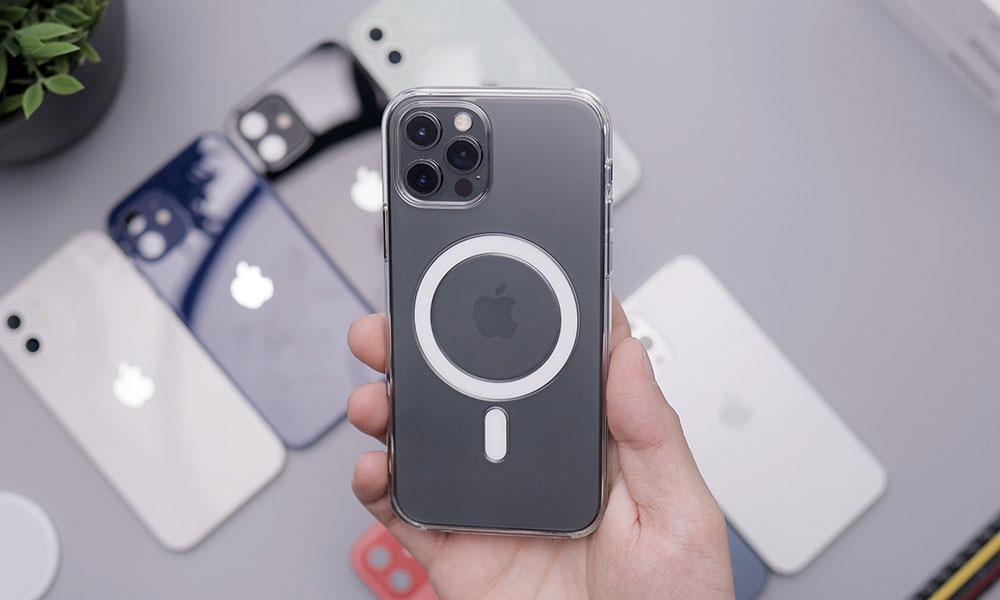Could a MagSafe Cooling Case Let Your iPhone 12 Pro Run Even Faster?
 Credit: Daniel Romero / Unsplash
Credit: Daniel Romero / Unsplash
Toggle Dark Mode
As hard as it is to believe with the performance of Apple’s A14 silicon in its latest iPhone 12 models, it looks like Apple may be pondering ways to help its smartphones run even faster, according to a new patent filing granted this week.
Modern processors generate a lot of heat when they’re working hard, which is not surprising considering that Apple’s A14 chip packs in almost 12 billion transistors into a chip the size of your thumbnail. This is why you’ll feel your iPhone heating up when you’re playing some of the latest high-end games or performing other demanding tasks.
The problem, however, is that to keep processors from overheating, engineers basically have two options: they can either add a cooling system like a fan or they can simply throttle the chip’s maximum performance to keep it from getting out of hand.
We’re already seeing this on Apple’s new M1-equipped MacBooks, which outperform every other Mac ever made in at least some performance metrics. However, while featuring the exact same M1 chips, Apple’s MacBook Air and entry-level MacBook Pro are differentiated primarily by the presence of a fan in the Pro model, but early benchmarks are already showing how this makes a big difference when it comes to sustaining performance.
In short, with a fan in place, the M1 chip in the MacBook Pro can run at faster speeds while the MacBook Air version has to be slowed down to prevent it from overheating.
In the case of Apple’s iPhones and iPads, however, the A-series chips have never had any kind of active cooling system. While obviously the iPhone casings are designed to dissipate some heat, Apple also has to account for the fact that many iPhone owners slap on exterior cases, most of which will definitely get in the way of keeping the A14 running as cool as it possibly can.
So when you think about it, Apple’s A-series chips likely have a lot more performance headroom than we’ve been able to take advantage of, since Apple is almost certainly throttling them at some level, and now it looks like Apple is at least contemplating ways that it could eke even more performance out of its already astonishingly fast A-series chips — by using its new MagSafe technology to build an active cooling case.
MagSafe Possibilities
There’s a lot more to the new MagSafe rings in Apple’s iPhone 12 models than merely providing for more efficient wireless charging, and although Apple has already demonstrated some of the more mundane possibilities with a new lineup of MagSafe accessories such as cases, the reality is that a closer look at the technology shows it’s clearly designed to accomplish a lot more than just let you magnetically attach things to your iPhone.
In addition to a ring of magnets, the MagSafe also features NFC technology to communicate with the attached accessory, and Apple is already putting this to use in allowing the iPhone 12 to detect specific types of cases so it can adjust the lock screen display accordingly, and it’s not a stretch to see how this could be used to allow a whole variety of other accessories to communicate with the iPhone, and perhaps even enable the kind of wireless data transfer that would usher in the portless iPhone.
MagSafe Cooling
Now in a new patent, it looks like Apple is looking to allow its MagSafe technology to detect if a specific type of case is attached to an iPhone to lift the limitations on processor throttling.
The idea behind the patent would seem to be that the detection of a “cooling case” would allow the A-series chip to run hotter, thereby increasing performance while the case was on the iPhone. Removing the case would of course return the iPhone to its normal peak performance thresholds.
The patent doesn’t really go into detail about what such a cooling case would look like, or how it would operate, and instead focuses primarily on the signalling method that would be used to let the iPhone know that it could operate at a higher operating temperature.
In fact, based on the wording of the patent, it’s not even strictly necessary that the case would have to be designed for active cooling; instead, the method could simply be used to identify cases that have been tested and certified to offer better heat dissipation than other cases, allowing the iPhone to know that it’s safer to run the processor at a higher operating temperature.
While the patent makes it clear that this would be used to allow a higher operating temperature to be used, the same principle could also be applied to throttling performance further in the event that extremely bulky cases were used. However, this implementation seems less likely as it’s not realistically possible for Apple to mandate that every iPhone case manufactured includes the necessary MagSafe hardware, and Apple would therefore need to err on the side of caution in the event that a non-certified case was being used.
To be clear, the iPhone also includes its own thermal sensors that prevent it from overheating, and some of the A14’s throttling is no doubt based on these sensors as well. However, a MagSafe handshake with a certified “cooling case” would undoubtedly be used in tandem with these sensors to safely throttle up the performance of the iPhone.
As usual, of course, the very fact that Apple has filed a patent for something does not signal that we will ever see the technology in production. Apple’s patents are very useful for showing some of the ideas that Apple is thinking about, however, patents don’t say anything about the practicality or engineering challenges of actually implementing many of the ideas that they describe.






